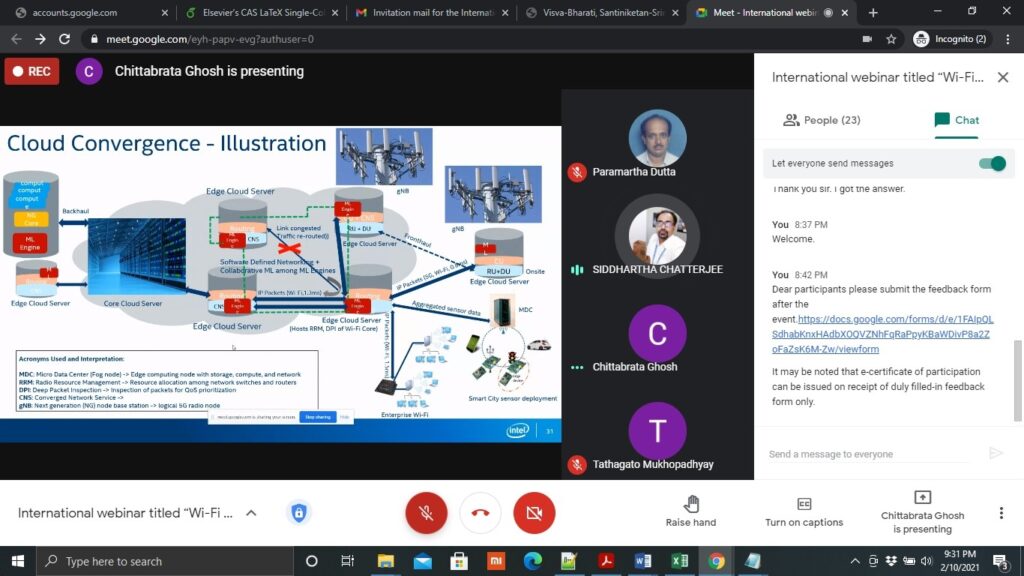Date: 10th February 2021, Time: 07:30 PM to 10.00 PM via Google Meet PlatformCo-sponsor: Department of Computer and System Sciences, Visva-Bharati
Resource Person (s): Dr. Chittabrata Ghosh of Principal Engineer, Intel Corporation, USA
Number of attendees: 39 (IEEE: 4)
Abstract: Wi-Fi 6, aka IEEE 802.11ax, as embedded in modern smart devices (iPhone 11, Samsung Galaxy S10, Dell XPS 15) made a paradigm shift in WLAN with the introduction of simultaneous multi-user communications using OFDMA (Orthogonal Frequency Division Multiple Access) and MU-MIMO (Multi-user Multiple Input Multiple Output) techniques. Enhanced spectral efficiency with these improved techniques made it possible to enable Wi-Fi in a myriad of scenarios, ranging from dense urban deployments to low latency AR/VR (augmented reality/virtual reality) applications. Wi-Fi 7, aka IEEE 802.11be, is making enhancements for seamless transitions among various parts of unlicensed spectrum. Multi-link operation is pivotal in this amendment of IEEE 802.11 standard. This talk will primarily focus on Wi-Fi 6 and Wi-Fi 7 amendments in connection to the growing needs of data traffic. The speaker will then delve deep into one such multi-user feature, termed as UL-OFDMA Random Access, from Wi-Fi 6 and its enhancements in Wi-Fi 7 and explain its relevance with the conventional contention-based channel access. In the later half of the talk, the speaker will introduce avenues of artificial intelligence (AI) in software design and architecture within a Wi-Fi chipset.
